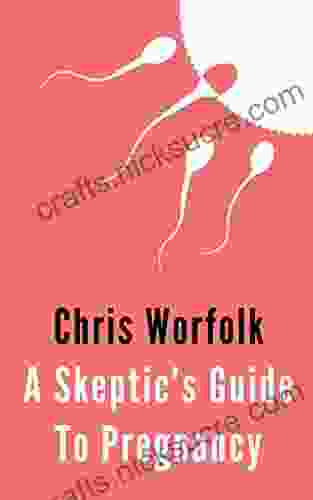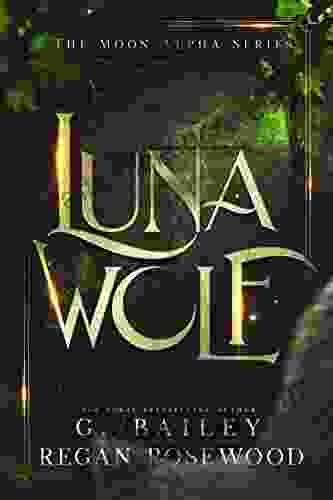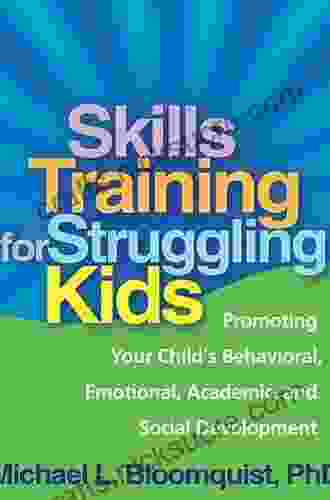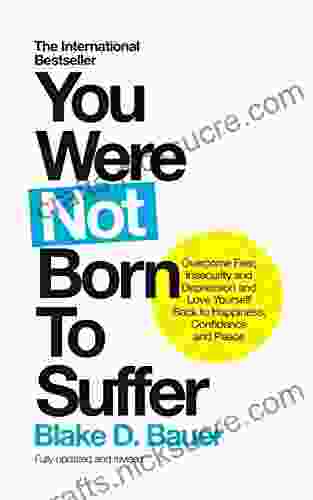The Ultimate Professor's Guide to Essay Writing: Master the Art of Crafting Stellar Essays

Essays serve as a cornerstone of academic discourse, challenging students to demonstrate their critical thinking, research skills, and writing prowess. As educators, we bear the responsibility of guiding our students through the intricate process of essay writing, empowering them with the tools and knowledge they need to produce exceptional work. This comprehensive guide, meticulously crafted by seasoned professors, will equip you with an arsenal of strategies, insights, and practical advice to help your students excel in the art of essay writing.
Part 1: Laying the Foundation
1.1 Understanding the Essay Blueprint
At the heart of a successful essay lies a solid understanding of its structure. Introduce your students to the traditional five-paragraph essay format:
4.5 out of 5
| Language | : | English |
| File size | : | 1016 KB |
| Text-to-Speech | : | Enabled |
| Screen Reader | : | Supported |
| Enhanced typesetting | : | Enabled |
| Word Wise | : | Enabled |
| Print length | : | 120 pages |
| Lending | : | Enabled |
| X-Ray | : | Enabled |
* : Captivatingly introduce the topic, provide background information, and present the thesis statement. * Body Paragraph 1: Support the thesis with evidence, analysis, and examples. * Body Paragraph 2: Further develop the argument by presenting alternative perspectives or counterevidence. * Body Paragraph 3: Synthesize and reinforce the main points, addressing any weaknesses or objections. * : Summarize the main arguments, restate the thesis, and provide a final thought or call to action.
1.2 Choosing a Compelling Topic
A well-chosen topic ignites a student's passion and fuels their writing. Guide them in selecting topics that:
* Align with the assignment guidelines and objectives. * Spark their interest and resonate with their personal experiences. * Allow for substantial research and exploration. * Offer multiple perspectives and diverse viewpoints.
1.3 Conducting Effective Research
Thorough research forms the backbone of a well-structured essay. Instruct your students on:
* Identifying reputable sources: Scholarly journals, academic books, credible websites. * Using keywords and search strategies to locate relevant information. * Critically evaluating sources: Assessing credibility, bias, and relevance. * Taking accurate notes and citing sources correctly.
Part 2: Crafting the Essay
2.1 Crafting a Compelling
A strong grabs the reader's attention and sets the tone for the entire essay. Encourage your students to:
* Hook the reader with an intriguing question, anecdote, or quotation. * Establish the context and background information. * Present a clear and concise thesis statement that outlines the main argument.
2.2 Developing Body Paragraphs
The body of the essay presents the evidence and analysis that support the thesis. Guide your students to:
* Begin each paragraph with a topic sentence that corresponds to the main points of the thesis. * Provide specific evidence from their research to support their claims. * Use transitional words and phrases to connect ideas and ensure a smooth flow. * Address opposing viewpoints or counterarguments to demonstrate a balanced perspective.
2.3 Crafting a Concluding Statement
The serves as the culmination of the essay, wrapping up the main arguments and leaving a lasting impression. Emphasize to your students that the should:
* Summarize the key points of the essay. * Restate the thesis statement and reinforce the main argument. * Offer a final thought, call to action, or future direction for research.
Part 3: Revising and Editing3.1 Revising for Content and Structure
Revision is an essential step in the writing process. Encourage your students to:
* Step away from their essays for a period of time to gain perspective. * Review the essay for logical flow, coherence, and consistency. * Check that the evidence supports the claims and the thesis is adequately defended. * Identify areas where further research or analysis is needed.
3.2 Editing for Mechanics and Style
Once the content is sound, it's time to focus on the mechanics and style of writing. Help your students to:
* Proofread carefully for any grammatical, spelling, or punctuation errors. * Use appropriate language and tone for the intended audience. * Employ active voice whenever possible to strengthen the writing. * Vary sentence structure and length to create a more engaging read.
Part 4: Assessment and Feedback
4.1 Establishing Clear Grading Criteria
Providing students with clear grading criteria is essential to ensure fairness and consistency. Consider factors such as:
* Thesis development and argumentation. * Research quality and evidence used. * Structure, organization, and flow. * Clarity, style, and grammar. * Originality and creativity.
4.2 Providing Constructive Feedback
Effective feedback is crucial for students' growth and development as writers. Offer specific, actionable comments that focus on:
* Strengths and areas for improvement. * Suggestions for enhancing content, structure, or style. * Guidance on how to address weaknesses and build on strengths. * Opportunities for further research or exploration.
Mastering the art of essay writing is a transformative skill that students will carry throughout their academic and professional lives. By providing them with a comprehensive understanding of the essay blueprint, guiding them through the research process, and offering constructive feedback, we empower them to produce essays that showcase their critical thinking, analytical skills, and writing prowess. Remember, your role as an educator extends beyond teaching students how to write essays; it is about fostering a lifelong love for learning and the pursuit of knowledge.
Additional Resources:
* Purdue Online Writing Lab: https://owl.purdue.edu/ * The Writing Center at the University of Wisconsin-Madison: https://writing.wisc.edu/ * The Essay Writing Process: A Step-by-Step Guide: https://www.khanacademy.org/humanities/us-history/us-history-ap/ap-us-history-1754-1800/a/the-essay-writing-process-a-step-by-step-guide
4.5 out of 5
| Language | : | English |
| File size | : | 1016 KB |
| Text-to-Speech | : | Enabled |
| Screen Reader | : | Supported |
| Enhanced typesetting | : | Enabled |
| Word Wise | : | Enabled |
| Print length | : | 120 pages |
| Lending | : | Enabled |
| X-Ray | : | Enabled |
Do you want to contribute by writing guest posts on this blog?
Please contact us and send us a resume of previous articles that you have written.
 Fiction
Fiction Non Fiction
Non Fiction Romance
Romance Mystery
Mystery Thriller
Thriller SciFi
SciFi Fantasy
Fantasy Horror
Horror Biography
Biography Selfhelp
Selfhelp Business
Business History
History Classics
Classics Poetry
Poetry Childrens
Childrens Young Adult
Young Adult Educational
Educational Cooking
Cooking Travel
Travel Lifestyle
Lifestyle Spirituality
Spirituality Health
Health Fitness
Fitness Technology
Technology Science
Science Arts
Arts Crafts
Crafts DIY
DIY Gardening
Gardening Petcare
Petcare Lisa Latimer
Lisa Latimer Aaron Hahn
Aaron Hahn Abby Haight
Abby Haight Christina Hoff Sommers
Christina Hoff Sommers David Warriner
David Warriner Heather Lynn
Heather Lynn Catherine Ryan Hyde
Catherine Ryan Hyde Stephen A Mitchell
Stephen A Mitchell David Lipsky
David Lipsky Anthony Wilkenson
Anthony Wilkenson Chashiree M
Chashiree M Jeremy Paxman
Jeremy Paxman Michelle Hodkin
Michelle Hodkin Terry Palechuk
Terry Palechuk Christopher Knight
Christopher Knight Baba Ifa Karade
Baba Ifa Karade Kirk Bailey
Kirk Bailey Michael L Bloomquist
Michael L Bloomquist Jennifer Greene
Jennifer Greene Achim K Krull
Achim K Krull Clara Shaper
Clara Shaper Stefan Ball
Stefan Ball Jon Butterworth
Jon Butterworth Sheldon Axler
Sheldon Axler Irakli Makharadze
Irakli Makharadze Eze Ugbor
Eze Ugbor Alexander Nehamas
Alexander Nehamas Peter Harrison
Peter Harrison Lavinia Collins
Lavinia Collins Suzanne Corkin
Suzanne Corkin Andrew Campanella
Andrew Campanella Charles H Kraft
Charles H Kraft Sarah Maslin Nir
Sarah Maslin Nir Louise Thaden
Louise Thaden John Kean
John Kean Ben Cohen
Ben Cohen Rachael Ray
Rachael Ray Marie Cirano
Marie Cirano Sam J Miller
Sam J Miller Jeremy Roenick
Jeremy Roenick Mark Januszewski
Mark Januszewski Adam Enaz
Adam Enaz Elisabetta Viggiani
Elisabetta Viggiani Erik Scott De Bie
Erik Scott De Bie Carl Vernon
Carl Vernon R L Stine
R L Stine Todd Graves
Todd Graves Jessica Hepburn
Jessica Hepburn Aaron Mccargo
Aaron Mccargo Chris Worfolk
Chris Worfolk J Robert King
J Robert King Garo Yepremian
Garo Yepremian Chris Jericho
Chris Jericho Zoyla Arana
Zoyla Arana Abraham Silberschatz
Abraham Silberschatz Gerald A Voorhees
Gerald A Voorhees Abigail Hing Wen
Abigail Hing Wen Kit Bauman
Kit Bauman Leigh Bardugo
Leigh Bardugo Kemi Iwalesin
Kemi Iwalesin Richard Sattora
Richard Sattora Lin Wellford
Lin Wellford David Rensin
David Rensin Al Baird
Al Baird Miranda Kenneally
Miranda Kenneally Abigail Pogrebin
Abigail Pogrebin Jay Ruud
Jay Ruud Douglas W Hubbard
Douglas W Hubbard James Surowiecki
James Surowiecki Stephanie Zeiss
Stephanie Zeiss Emily Suzanne Clark
Emily Suzanne Clark Mary Roach
Mary Roach O Thomas Gift
O Thomas Gift William Hamilton Gibson
William Hamilton Gibson Christopher Pike
Christopher Pike Laura Sebastian
Laura Sebastian Wayne Westcott
Wayne Westcott Sarah Moore
Sarah Moore Steven Alan Childress
Steven Alan Childress Miriam Forman Brunell
Miriam Forman Brunell Dmv Test Bank
Dmv Test Bank Steve Griffith
Steve Griffith Abdul Foster
Abdul Foster Shari Eskenas
Shari Eskenas Charles Fernyhough
Charles Fernyhough Gisle Solhaug
Gisle Solhaug Gregor Clark
Gregor Clark Tali Edut
Tali Edut Ned Johnson
Ned Johnson Horace Kephart
Horace Kephart Bruce Van Brunt
Bruce Van Brunt Irene Lewis Mccormick
Irene Lewis Mccormick Helen Scales
Helen Scales Charles L Byrne
Charles L Byrne Caroline Kaufman
Caroline Kaufman Taylan Hoca
Taylan Hoca Brian L Gorman
Brian L Gorman Michel Roy
Michel Roy Matt Owens
Matt Owens Ariana Eagleton
Ariana Eagleton Curt Lader
Curt Lader Zoe Hamlet Silva
Zoe Hamlet Silva Al Barkow
Al Barkow Aaron Reed Msn Crna
Aaron Reed Msn Crna Mikki Daughtry
Mikki Daughtry Peter David
Peter David Rachel Caine
Rachel Caine Rob Gray
Rob Gray Kim Gosselin
Kim Gosselin Carley Roney
Carley Roney Jimmy Houston
Jimmy Houston Erika Fatland
Erika Fatland Jennifer Finney Boylan
Jennifer Finney Boylan John Caig
John Caig Charlie Barker
Charlie Barker Steve Roper
Steve Roper Benjamin Roberts
Benjamin Roberts Claire Ahn
Claire Ahn Sam Jarman
Sam Jarman Abbi Glines
Abbi Glines James Heberd
James Heberd Katrina Kahler
Katrina Kahler Gail Buckland
Gail Buckland Dan Werb
Dan Werb Megan Lane
Megan Lane Adam Freeman
Adam Freeman Hans C Ohanian
Hans C Ohanian Cosmas Inyang
Cosmas Inyang Lindsey Ellison
Lindsey Ellison Larry Carpenter
Larry Carpenter Robert Allans
Robert Allans Kathy Koch Phd
Kathy Koch Phd Michael Crawley
Michael Crawley Jacob Neumann
Jacob Neumann Abigail Alling
Abigail Alling Felice Fox
Felice Fox Gloria Atanmo
Gloria Atanmo Adam Lashinsky
Adam Lashinsky Craig Timberg
Craig Timberg Rosie Pope
Rosie Pope Randy Walker
Randy Walker Ann Frederick
Ann Frederick Carolyn Jessop
Carolyn Jessop Lillian Cumic
Lillian Cumic Rex Ogle
Rex Ogle Sean Mcmanus
Sean Mcmanus Pearson Education
Pearson Education Sherri Granato
Sherri Granato Ronald Kaine
Ronald Kaine Dr Robert Pasahow
Dr Robert Pasahow Stephen Brennan
Stephen Brennan Scott Meyers
Scott Meyers Edward J Larson
Edward J Larson Darrin Bergman
Darrin Bergman Tamora Pierce
Tamora Pierce Annie Nicholas
Annie Nicholas Laurie Chaikind Mcnulty Lcsw C
Laurie Chaikind Mcnulty Lcsw C Nancy Mohrbacher
Nancy Mohrbacher Tom Jackson
Tom Jackson Abridged Ed Edition Kindle Edition
Abridged Ed Edition Kindle Edition Genius Reads
Genius Reads Moon Ho Jung
Moon Ho Jung Abigail Melton
Abigail Melton Sarah Luddington
Sarah Luddington Adam Frank
Adam Frank Rory Miller
Rory Miller Garrett Mcnamara
Garrett Mcnamara Lucio Russo
Lucio Russo Tomos Forrest
Tomos Forrest G Bailey
G Bailey John Taylor
John Taylor Chaz Scoggins
Chaz Scoggins Virginia Smith Harvey
Virginia Smith Harvey Agustin Fuentes
Agustin Fuentes Kaylynn Flanders
Kaylynn Flanders Abdelkader Nouiri
Abdelkader Nouiri Andrew Skurka
Andrew Skurka Phong Thong Dang
Phong Thong Dang Martha Gellhorn
Martha Gellhorn Scott Carney
Scott Carney Iain Highfield
Iain Highfield Goodman Publishing
Goodman Publishing Ken Springer
Ken Springer Lisa Heffernan
Lisa Heffernan T L Christianson
T L Christianson Chuck Callaway
Chuck Callaway Carmen Moreno
Carmen Moreno Adam J Cox
Adam J Cox Stephen Gray
Stephen Gray Winston Chang
Winston Chang Aaron Oster
Aaron Oster Barry Robinson
Barry Robinson Richard Lighthouse
Richard Lighthouse Bobby Reyes
Bobby Reyes Bill Mckibben
Bill Mckibben Sorin Dumitrascu
Sorin Dumitrascu Programming Languages Academy
Programming Languages Academy Scott Shaw
Scott Shaw Monica Sorrenson
Monica Sorrenson Alvin Alexander
Alvin Alexander Aiden Thomas
Aiden Thomas Cassandra Eason
Cassandra Eason Stuart Firestein
Stuart Firestein Brian Greene
Brian Greene David Winner
David Winner Rose Ann Hudson
Rose Ann Hudson Gary Sakuma
Gary Sakuma Jasna Tuta
Jasna Tuta Abigail Marshall
Abigail Marshall Teresa Finney
Teresa Finney Aaron Reed
Aaron Reed Dan Morris
Dan Morris Colin Hunter
Colin Hunter Amby Burfoot
Amby Burfoot Christian Beamish
Christian Beamish Jim Willis
Jim Willis Kevin A Morrison
Kevin A Morrison Israel Finkelstein
Israel Finkelstein Winifred Conkling
Winifred Conkling Bill Loguidice
Bill Loguidice Aliza Green
Aliza Green Mary Wong
Mary Wong Lois G Schwoerer
Lois G Schwoerer John D Gordon
John D Gordon Abigail Tucker
Abigail Tucker Glen Finland
Glen Finland Jason Korol
Jason Korol Paula Deen
Paula Deen Liza Angela
Liza Angela Roman Dial
Roman Dial Helen C Rountree
Helen C Rountree Brandon Neice
Brandon Neice Jessie Hartland
Jessie Hartland Justin Driver
Justin Driver Kenn Kaufman
Kenn Kaufman Arthur Atchabahian
Arthur Atchabahian Amber Fox
Amber Fox Ron Jones
Ron Jones Og Mandino
Og Mandino David Feddes
David Feddes Stephen Abbott
Stephen Abbott Joe Simpson
Joe Simpson Brad Brewer
Brad Brewer Neil Oliver
Neil Oliver Deborah Madison
Deborah Madison Rolf Mowatt Larssen
Rolf Mowatt Larssen Sharon Boyd
Sharon Boyd Allan Sand
Allan Sand Emily K Neuburger
Emily K Neuburger Walter Browder
Walter Browder Adam Benshea
Adam Benshea Alicia C Simpson
Alicia C Simpson Mark Strom
Mark Strom Man Kam Lo
Man Kam Lo Tom Mccarthy
Tom Mccarthy Michael Baigent
Michael Baigent Steve Mcmenamin
Steve Mcmenamin Jenny Han
Jenny Han Devika Primic
Devika Primic Tom Migdalski
Tom Migdalski Fumio Sasaki
Fumio Sasaki Emma Crewe
Emma Crewe Jennifer Ackerman
Jennifer Ackerman Ron Hotchkiss
Ron Hotchkiss Peter Sagal
Peter Sagal Lynn Alley
Lynn Alley Harley Rustad
Harley Rustad Christophe Jaffrelot
Christophe Jaffrelot Casey Robson
Casey Robson Beth Newell
Beth Newell Christopher Black
Christopher Black Jeff Bauman
Jeff Bauman Vivian Gussin Paley
Vivian Gussin Paley Sasha Abramsky
Sasha Abramsky Charles C Patrick
Charles C Patrick Al Desetta
Al Desetta Michael N Mitchell
Michael N Mitchell Xiuhtezcatl Martinez
Xiuhtezcatl Martinez Abby Hafer
Abby Hafer Martha C Nussbaum
Martha C Nussbaum Alicia Silverstone
Alicia Silverstone Andy Couturier
Andy Couturier Dan Shideler
Dan Shideler Abigail Owen
Abigail Owen Barbara Natterson Horowitz
Barbara Natterson Horowitz P S Page
P S Page Achref Hassini
Achref Hassini Sally Clarkson
Sally Clarkson Alan Robertson
Alan Robertson Marvin Valerie Georgia
Marvin Valerie Georgia Tim Larkin
Tim Larkin E P Marcellin
E P Marcellin Conrad Bauer
Conrad Bauer Stephen R Lawhead
Stephen R Lawhead Maureen Duffin Ward
Maureen Duffin Ward Achille Rubini
Achille Rubini David Simon
David Simon Eduardo Duran
Eduardo Duran Christopher Monahan
Christopher Monahan Aaron James
Aaron James Blake D Bauer
Blake D Bauer Chiara Giuliani
Chiara Giuliani Michael Johnson
Michael Johnson David G Brown
David G Brown Gladys Chepkirui Ngetich
Gladys Chepkirui Ngetich Ian Davis
Ian Davis Sissy Goff
Sissy Goff Ralph Villiger
Ralph Villiger Adam Braus
Adam Braus Tomi Adeyemi
Tomi Adeyemi Steve Rosenberg
Steve Rosenberg An American Citizen
An American Citizen Adam J Rosh
Adam J Rosh Timothy Phelps
Timothy Phelps Laurence Steinberg
Laurence Steinberg Meg Keys
Meg Keys Linda Sarris
Linda Sarris Richard Martin
Richard Martin Thubten Yeshe
Thubten Yeshe Jennifer L Hunt
Jennifer L Hunt Scott Butler
Scott Butler Vince Kotchian
Vince Kotchian Elena Aguilar
Elena Aguilar Hillary Allen
Hillary Allen Judi Kesselman Turkel
Judi Kesselman Turkel Ian Mcleod
Ian Mcleod Maya Lang
Maya Lang Cornel West
Cornel West Laura Gao
Laura Gao Pamela Druckerman
Pamela Druckerman Ken Retallic
Ken Retallic Daphne Poltz
Daphne Poltz Sophie Mccartney
Sophie Mccartney Abbey Curran
Abbey Curran Kayla Cottingham
Kayla Cottingham Richard Langer
Richard Langer Jack Moore
Jack Moore Melodie M Davis
Melodie M Davis Aaron Blight
Aaron Blight Amelia Whitmore
Amelia Whitmore Gayle Forman
Gayle Forman Barbara Fox
Barbara Fox Randi Hutter Epstein
Randi Hutter Epstein Andrea M Nelson Royes
Andrea M Nelson Royes Phil Gaimon
Phil Gaimon Laura Peyton Roberts
Laura Peyton Roberts Ed Engle
Ed Engle Reinette Biggs
Reinette Biggs Abigail Hair
Abigail Hair Jeremy Shinewald
Jeremy Shinewald Lynn Rush
Lynn Rush Marlene Wagman Geller
Marlene Wagman Geller Debbie Ford
Debbie Ford Tom Rosenbauer
Tom Rosenbauer Louise Pickford
Louise Pickford Susan Zeppieri
Susan Zeppieri Jay Dawes
Jay Dawes Seth Kugel
Seth Kugel Gil Capps
Gil Capps Jeremy Miles
Jeremy Miles Phil Boyle
Phil Boyle Thomas Wilson
Thomas Wilson Michael Gruenbaum
Michael Gruenbaum Drew Harris
Drew Harris Vikas Kakwani
Vikas Kakwani Robert Fritz
Robert Fritz M J Parisian
M J Parisian Aaron Mahnke
Aaron Mahnke Paul Chiasson
Paul Chiasson Ryan Smithson
Ryan Smithson Michelle Obama
Michelle Obama Vivienne Sanders
Vivienne Sanders Abby Mcallister
Abby Mcallister Laura Ray
Laura Ray Lisa Robertson
Lisa Robertson Asato Asato
Asato Asato Barbara A Lewis
Barbara A Lewis Bathroom Readers Institute
Bathroom Readers Institute Randall Hyde
Randall Hyde Charles Thomas Jr
Charles Thomas Jr Kristin Berry
Kristin Berry Maxine Levaren
Maxine Levaren Stacy Eaton
Stacy Eaton Richelle Mead
Richelle Mead Lee Sandlin
Lee Sandlin Norton Juster
Norton Juster Sarah K L Wilson
Sarah K L Wilson Pat Chargot
Pat Chargot Adam Koch
Adam Koch Linford Stutzman
Linford Stutzman Nick Holt
Nick Holt Rick Sekuloski
Rick Sekuloski Achusim Michael
Achusim Michael Domenica Marchetti
Domenica Marchetti Fred Fields
Fred Fields Lisa M Schab
Lisa M Schab Sheila Lamb
Sheila Lamb Betsy Miller
Betsy Miller Ada Calhoun
Ada Calhoun Jennifer Shannon
Jennifer Shannon Papus
Papus Katie Lear
Katie Lear Jim Morekis
Jim Morekis Aaron Lee Johnson
Aaron Lee Johnson Lynn E Ponton
Lynn E Ponton Adam Boduch
Adam Boduch Aaron J Perry
Aaron J Perry Adam Kimelman
Adam Kimelman Tim Jarvis
Tim Jarvis Emily J Taylor
Emily J Taylor Shannon Hale
Shannon Hale Aaron Graves
Aaron Graves Kate Rope
Kate Rope Abby Sunderland
Abby Sunderland Robert Reid
Robert Reid Christopher S Stewart
Christopher S Stewart Farah Shabazz Ii
Farah Shabazz Ii Alifya And Umesh Mohite
Alifya And Umesh Mohite Brian Hoggard
Brian Hoggard Uri Bram
Uri Bram Tony Soper
Tony Soper Paul Mclerran
Paul Mclerran Amber Domoradzki
Amber Domoradzki Brigitte Jordan
Brigitte Jordan Arthur Turrell
Arthur Turrell Joy Neighbors
Joy Neighbors Barbara Decker
Barbara Decker Jack Cavanaugh
Jack Cavanaugh William Deresiewicz
William Deresiewicz Marc Dando
Marc Dando Corinne Andrews
Corinne Andrews Daniel Carter Beard
Daniel Carter Beard Renda Dionne Madrigal
Renda Dionne Madrigal Lucy Letcher
Lucy Letcher Lenyfer Garrido
Lenyfer Garrido Paul Schneider
Paul Schneider Adam Chandler
Adam Chandler Abbas Kazerooni
Abbas Kazerooni Gerry Donohue
Gerry Donohue Carl Jones
Carl Jones Adam Galinsky
Adam Galinsky George J Hademenos
George J Hademenos Abhishek V R
Abhishek V R Al Yellon
Al Yellon Abinash Das
Abinash Das Jane Gross
Jane Gross Adam Becker
Adam Becker Abu Mussab Wajdi Akkari
Abu Mussab Wajdi Akkari Deborah Beck Busis
Deborah Beck Busis Susan Walton
Susan Walton John Hancock
John Hancock Shuai Huang
Shuai Huang Claire Santry
Claire Santry Collins Kids
Collins Kids Lisa M Given
Lisa M Given Stephanie Puglisi
Stephanie Puglisi Dawson Church
Dawson Church Sean Lewis
Sean Lewis Scott Parsons
Scott Parsons Debbie Elicksen
Debbie Elicksen Adam Lazarus
Adam Lazarus Gavin D J Harper
Gavin D J Harper Rania Abouzeid
Rania Abouzeid Eugene H Merrill
Eugene H Merrill Sheri Van Dijk
Sheri Van Dijk Lisa Pineda
Lisa Pineda Chella Quint
Chella Quint Ilsa J Bick
Ilsa J Bick Andy Dumas
Andy Dumas Adam H Balen
Adam H Balen Dick Edie
Dick Edie T L Lowery
T L Lowery Adam D Scott
Adam D Scott Natasha Preston
Natasha Preston George John Romanes
George John Romanes Kel Carpenter
Kel Carpenter Michael Egan
Michael Egan Axie Oh
Axie Oh Matt Warshaw
Matt Warshaw Ann Mariah Cook
Ann Mariah Cook Barry Dainton
Barry Dainton
Light bulbAdvertise smarter! Our strategic ad space ensures maximum exposure. Reserve your spot today!
 Aron CoxFollow ·7.6k
Aron CoxFollow ·7.6k Dan BrownFollow ·5.7k
Dan BrownFollow ·5.7k William ShakespeareFollow ·9k
William ShakespeareFollow ·9k Jeremy CookFollow ·3.9k
Jeremy CookFollow ·3.9k James GrayFollow ·11.3k
James GrayFollow ·11.3k Josh CarterFollow ·7.8k
Josh CarterFollow ·7.8k Felipe BlairFollow ·12.5k
Felipe BlairFollow ·12.5k Jackson BlairFollow ·12.7k
Jackson BlairFollow ·12.7k

 Doug Price
Doug PriceTracing the Evolution of Modern Psychoanalytic Thought:...
Psychoanalysis, once considered a radical...

 Devin Ross
Devin RossThe Digital Role Playing Game Approaches To Digital Game...
These are just a few of the many...
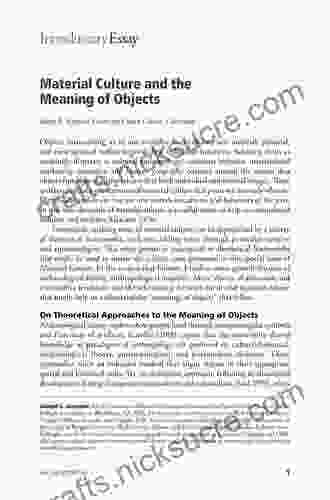
 F. Scott Fitzgerald
F. Scott FitzgeraldHistory from Things: Essays on Material Culture
History from Things:...

 Percy Bysshe Shelley
Percy Bysshe ShelleyThe Priest Lake Girl and the Cabin of Love: A True Story...
The Murder On...

 Isaiah Powell
Isaiah PowellThe Golf Mystic: Dick Edie's Unconventional Approach to...
In the annals of golf history, the name Dick...
4.5 out of 5
| Language | : | English |
| File size | : | 1016 KB |
| Text-to-Speech | : | Enabled |
| Screen Reader | : | Supported |
| Enhanced typesetting | : | Enabled |
| Word Wise | : | Enabled |
| Print length | : | 120 pages |
| Lending | : | Enabled |
| X-Ray | : | Enabled |



